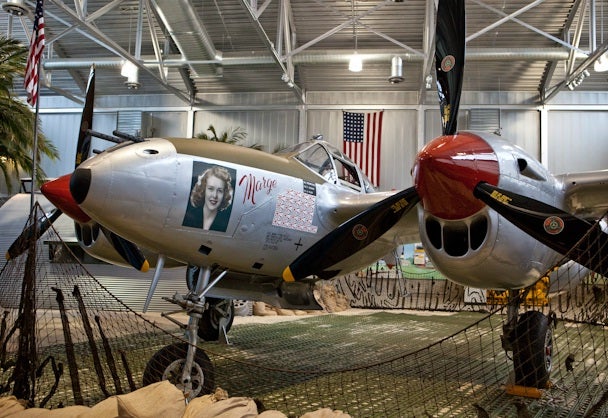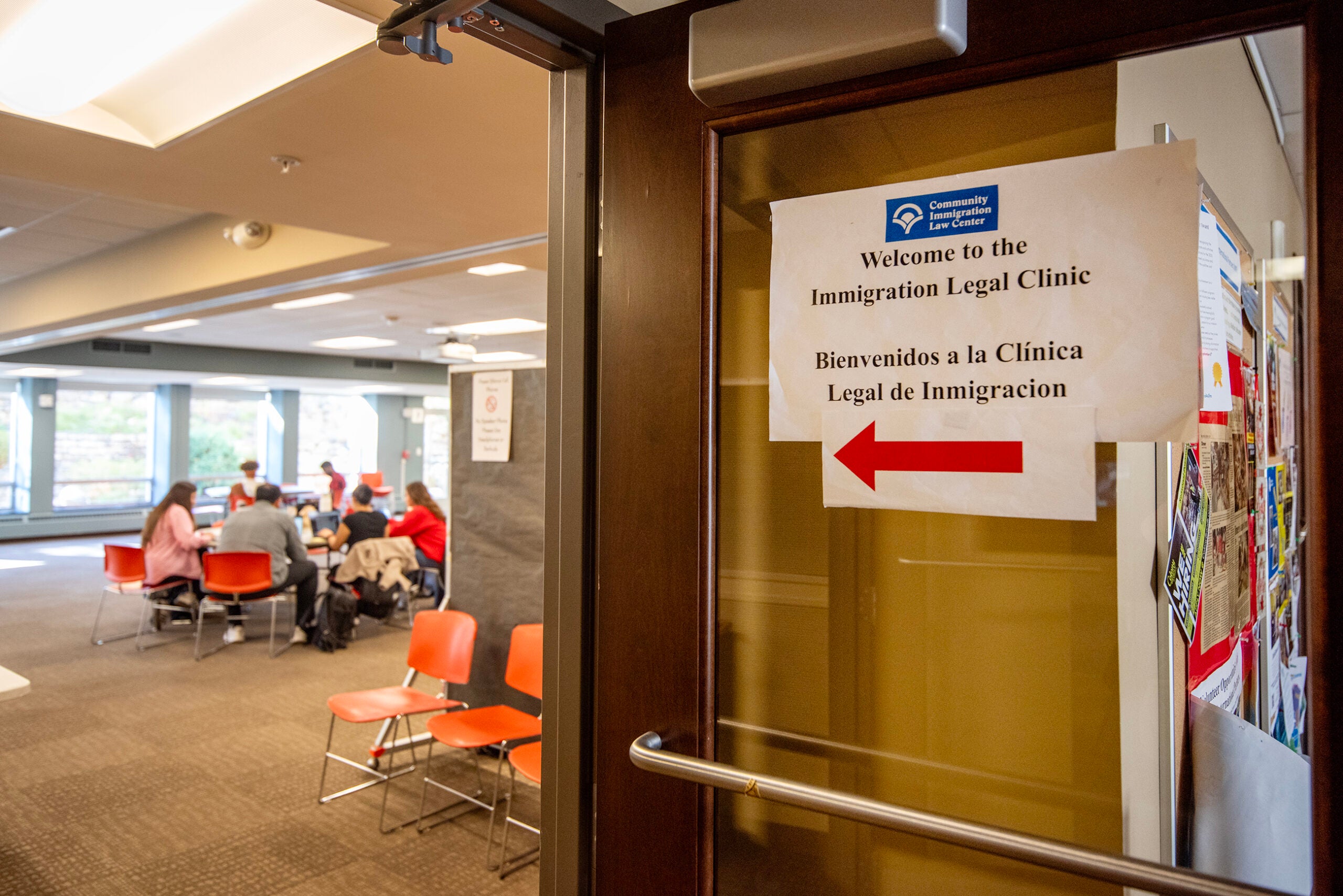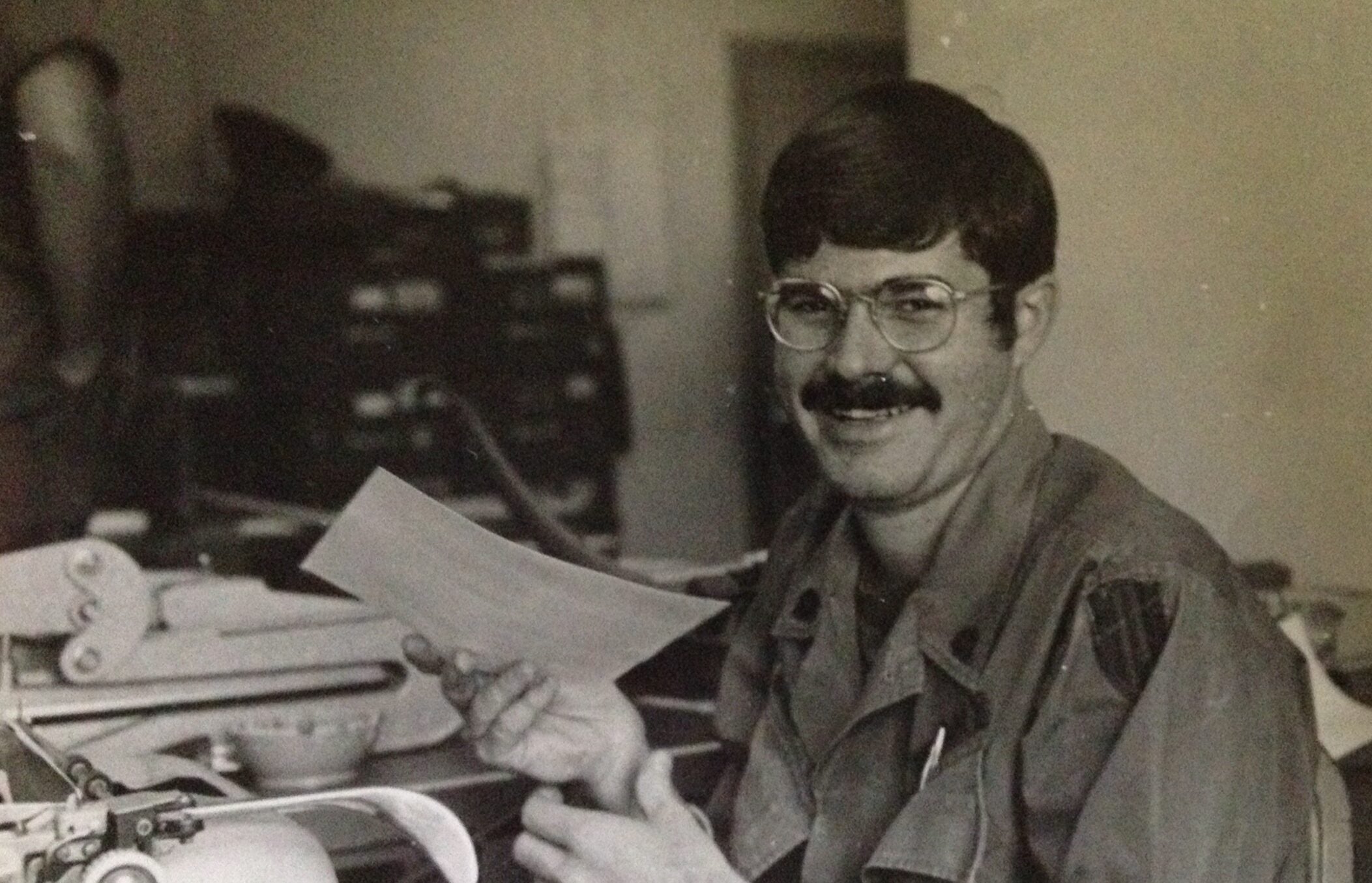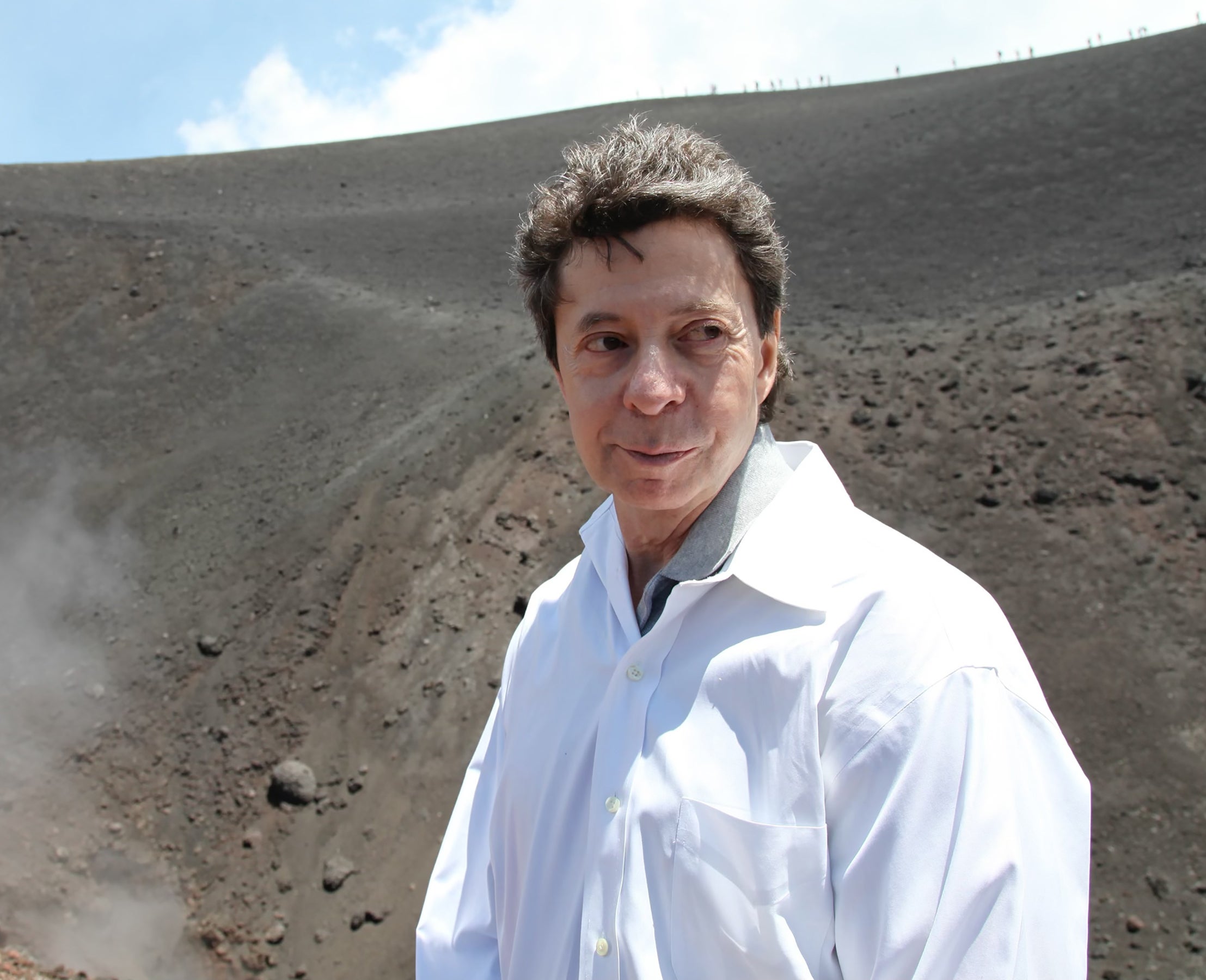Although he was killed when he was just 24-years-old at the end of World War II, and is no longer a national hero or household name, ace pilot Richard Bong of Wisconsin has left a legacy for generations to come.
On September 24th, 2002, on what would have been his 82nd birthday, the Richard Bong World War II Heritage Center opened on Superior’s waterfront to the voices of the University of Wisconsin Barbershop Quartet.
Bong Board Chairman Brigadier General Ray Klosowski invited the hundreds of people gathered to tour this new center.
News with a little more humanity
WPR’s “Wisconsin Today” newsletter keeps you connected to the state you love without feeling overwhelmed. No paywall. No agenda. No corporate filter.
The $5 million center is built in the shape of an airplane hangar, housing a P-38 Lightning fighter plane restored by volunteers from the Air National Guard, complete with a hand-painted picture of his sweetheart and the name “Marge” on its nose.
In a 2001 interview, Marjorie Bong Drucker said she knows most people, especially young people, have never heard of her late husband.
“If it’s taught in school, it’s really revisionist history. It may not even be politically correct to talk about Richard shooting down 40 Japanese pilots,” she said.”And we do our best. We all do our best and I think this is the major premise of the Heritage Center.”
But many young people do remember Richard Bong now.School children have field trips to what is now the Richard Bong Veterans Historical Center, to honor all veterans.
In 1999, the U.S. Air Force Academy class of 2003 chose Major Bong as their class exemplar.Not long after that, Bong Drucker was invited to the Air Force Academy.
“I remember at the first dinner that we had in this huge hall, where there were like a thousand cadets seated,” she said. “And the first speaker who mentioned the class of 2003, this uproar from a thousand students on their feet yelling “Bong!” We all looked at each other and said ‘What’s going on?’ And then we discovered that really is their class motto. They were such wonderful, wonderful young people.”
Finally, there is the disappearing legacy of his aging comrades from the jungles of New Guinea.Bong crew chief Sergeant Elwood Bardon says that was another lifetime ago.
“It’s kind of like a dream. It’s a dream that you wouldn’t give anything for having, but you wouldn’t go back and do it again,” he says.
Sixty years later, in a 2002 interview, Bardon could still see the face of the 22 year-old country boy from northern Wisconsin.
“He just looked like a baby kid, when he come and got in that airplane, I mean, of course you know, it don’t take you long to get old over there.”
Bardon last saw Richard Bong at a war bond rally in Mobile, Alabama.When the Bong Heritage Center opened in 2002, he said he wouldn’t miss it.
“It was important to me,” he says. “I mean, I still cry. It was an experience. And he’s a great hero. And um, I loved him.”
Wisconsin Public Radio, © Copyright 2025, Board of Regents of the University of Wisconsin System and Wisconsin Educational Communications Board.







